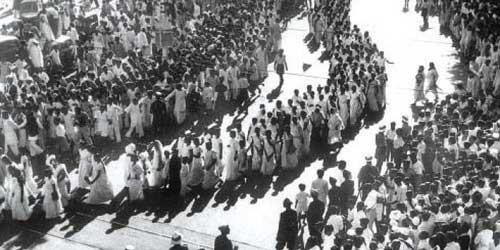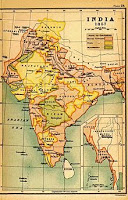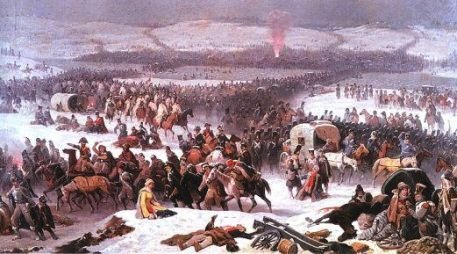The Israeli–Palestinian conflict is the ongoing struggle between Israelis and Palestinians that began in the mid-20th century and now into the 21st century. The conflict is wide-ranging, and the term is sometimes also used in reference to the earlier sectarian conflict in Mandatory Palestine, between the Zionist yishuv and the Arab population under British rule. The Israeli–Palestinian conflict has formed the core part of the wider Arab–Israeli conflict. It has widely been referred to as the world’s “most intractable conflict”.
Though Palestinian nationalism developed a generation after Zionism, Muslim and Christian Arabs who identify as Palestinian root their nationality in centuries of continued residence in the land they call Palestine, and Jews call Israel. Israelis’ and Palestinians’ conflicting claims to this land have led to mistrust and bloodshed on both sides throughout the 20th century, and now into the 21st.
Read Also: Arab League Okays Arrangement On Israel-Palestine Land Swap
A long-term peace process and the general reconciliation of Israel with Egypt and Jordan, Israelis and Palestinians have failed to reach a final peace agreement. The remaining key issues are mutual recognition, borders, security, water rights, control of Jerusalem, Israeli settlements, Palestinian freedom of movement, and resolving Palestinian claims of a right of return for their refugees.
The violence of the conflict, in a region rich in sites of historic, cultural and religious interest worldwide, has been the object of numerous international conferences dealing with historic rights, security issues, and human rights, and has been a factor hampering tourism in and general access to areas that are hotly contested.
The majority of Palestinians and Israelis in the West Bank and Gaza Strip have expressed a preference for a two-state solution. Mutual distrust and significant disagreements are deep over basic issues, as is the reciprocal skepticism about the other side’s commitment to upholding obligations in an eventual agreement.
The two parties engaged in direct negotiation are the Israeli government, currently led by Benjamin Netanyahu, and the Palestine Liberation Organization (PLO), currently headed by Mahmoud Abbas. The official negotiations are mediated by an international contingent known as the Quartet on the Middle East (the Quartet) represented by a special envoy that consists of the United States, Russia, the European Union, and the United Nations. The Arab League is another important actor, which has proposed an alternative peace plan.
The Palestinian side has been fractured by conflict between the two major factions: Fatah, the traditionally dominant party, and its later electoral challenger, Hamas. After Hamas’s electoral victory in 2006 the US, EU, and Israel refused to recognize its government and much of the funding to the Palestinian National Authority was suspended.
Hamas’ seizure of power in the Gaza Strip in June 2007, the territory officially recognized as the State of Palestine(former Palestinian National Authority – the Palestinian interim governing body) is split between Fatah in the West Bank, and Hamas in the Gaza Strip.
The division of governance between the parties has effectively resulted in the collapse of bipartisan governance of the Palestinian National Authority (PA). The latest rounds of peace negotiations began in July 2013 and were suspended in 2014. As of 17 July 2014, intensified, widespread rocket attacks emanating from Gaza have led to a ground invasion by the Israel Defense Forces.
The Israeli–Palestinian conflict is the ongoing str between Israelis and Palestinians that began in the mid-20th century and now into the 21st century. The conflict is wide-ranging, and the term is sometimes also used in reference to the earlier sectarian conflict in Mandatory Palestine, between the Zionist yishuv and the Arab population under British rule. The Israeli–Palestinian conflict has formed the core part of the wider Arab–Israeli conflict. It has widely been referred to as the world’s “most intractable conflict”.
Must Read: Devanand Sharma : Indian Origin Diplomat as New Australian Envoy to Israel
Though Palestinian nationalism developed a generation after Zionism, Muslim and Christian Arabs who identify as Palestinian root their nationality in centuries of continued residence in the land they call Palestine, and Jews call Israel. Israelis’ and Palestinians’ conflicting claims to this land have led to mistrust and bloodshed on both sides throughout the 20th century, and now into the 21st.
A long-term peace process and the general reconciliation of Israel with Egypt and Jordan, Israelis and Palestinians have failed to reach a final peace agreement. The remaining key issues are mutual recognition, borders, security, water rights, control of Jerusalem, Israeli settlements, Palestinian freedom of movement, and resolving Palestinian claims of a right of return for their refugees.
The violence of the conflict, in a region rich in sites of historic, cultural and religious interest worldwide, has been the object of numerous international conferences dealing with historic rights, security issues, and human rights, and has been a factor hampering tourism in and general access to areas that are hotly contested.
The majority of Palestinians and Israelis in the West Bank and Gaza Strip have expressed a preference for a two-state solution. Mutual distrust and significant disagreements are deep over basic issues, as is the reciprocal skepticism about the other side’s commitment to upholding obligations in an eventual agreement.
The two parties engaged in direct negotiation are the Israeli government, currently led by Benjamin Netanyahu, and the Palestine Liberation Organization (PLO), currently headed by Mahmoud Abbas. The official negotiations are mediated by an international contingent known as the Quartet on the Middle East (the Quartet) represented by a special envoy that consists of the United States, Russia, the European Union, and the United Nations. The Arab League is another important actor, which has proposed an alternative peace plan.
The Palestinian side has been fractured by conflict between the two major factions: Fatah, the traditionally dominant party, and its later electoral challenger, Hamas. After Hamas’s electoral victory in 2006 the US, EU, and Israel refused to recognize its government and much of the funding to the Palestinian National Authority was suspended.
Hamas’ seizure of power in the Gaza Strip in June 2007, the territory officially recognized as the State of Palestine(former Palestinian National Authority – the Palestinian interim governing body) is split between Fatah in the West Bank and Hamas in the Gaza Strip.
The division of governance between the parties has effectively resulted in the collapse of bipartisan governance of the Palestinian National Authority (PA). The latest rounds of peace negotiations began in July 2013 and were suspended in 2014. As of 17 July 2014, intensified, widespread rocket attacks emanating from Gaza have led to a ground invasion by the Israel Defense Forces.
Also, Read:
US, Israel Test Anti-missile System
Technologically Advanced Countries in the World
People who changed the World






